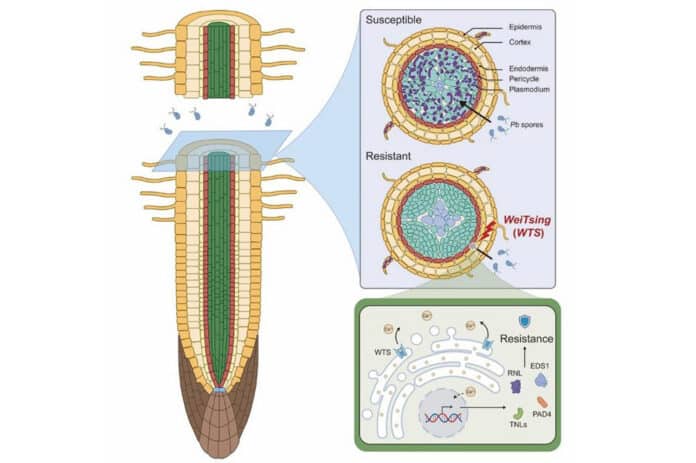Plant roots encounter numerous pathogenic microbes that often cause devastating diseases. One such pathogen, Plasmodiophora brassicae (Pb), causes clubroot disease and severe yield losses on cruciferous crops worldwide.
Researchers from the Institute of Genetics and Developmental Biology of the Chinese Academy of Sciences, under the direction of CHEN Yuhang and ZHOU Jianmin, have demonstrated how plants can fend off clubroot. This serious root disease threatens the productivity of Brassica crops like rape.
Clubroot is a soil-borne disease, the most devastating disease of Brassica crops.
Plasmodiophora brassicae (Pb), the pathogen responsible for clubroot, can survive in the soil for up to 20 years when dormant, making it unsuitable for Brassica crops.
Only two clubroot resistance genes have been cloned, and their resistance has broken down due to newly evolved virulent Pb isolates.
In this study, all Pb isolates tested, including isolates that are virulent towards currently existing resistant rape varieties, are resistant to all Pb by the newly discovered resistance gene WTS. WTS is a broad-spectrum resistance gene with much potential for breeding crops resistant to clubroot disease.
In the absence of a pathogen, WTS is not expressed. The pericycle, a vital layer of root cells surrounding the stele, is the only place where WTS is enormously increased following Pb infection. Critical tissues, including as xylem and phloem, which are necessary for transporting nutrients and water, are found in the cylindrical center vascular section of the root called the stele.
Pb invades and colonizes the stele of sensitive plants, preventing the passage of nutrients and water. The pericycle’s expression of WTS stimulates plant defenses and stops Pb from colonizing the stele. To ensure regular plant growth and development, WTS develops a defense mechanism that is selectively engaged at the appropriate location and time.
WTS also encodes a brand-new protein. Cryo-EM structural investigation has shown that WTS self-assembles into a pentameric architecture with a central pore, which was previously unknown.
Further studies have also shown that the WTS protein complex functions as an endoplasmic reticulum-localized calcium release channel that increases cytosolic calcium ions, a critical secondary signal for activating plant defenses.
Journal Reference:
- Wei Wang, Li Qin et al. WeiTsing, a pericycle-expressed ion channel, safeguards the stele to confer clubroot resistance. Cell. DOI: 10.1016/j.cell.2023.05.023
